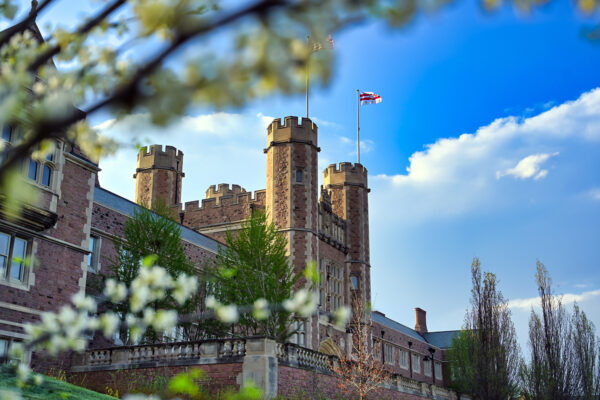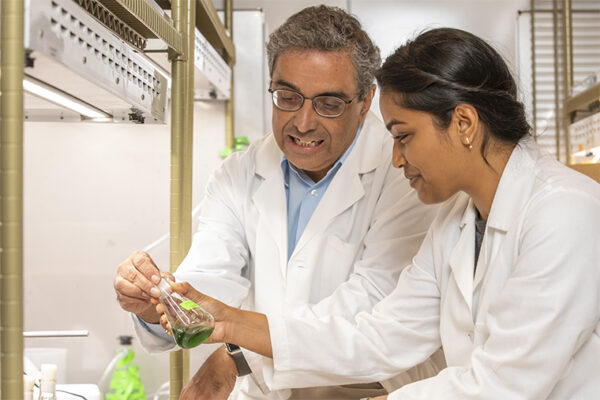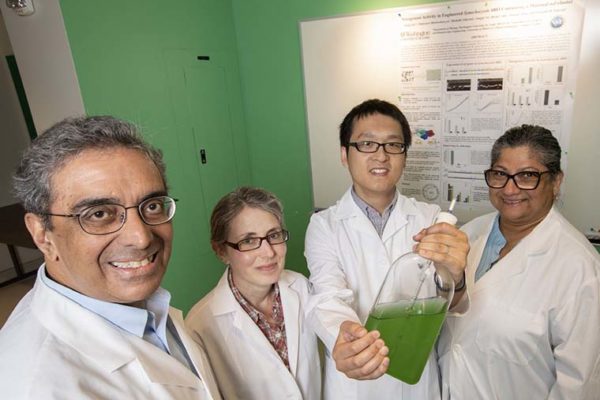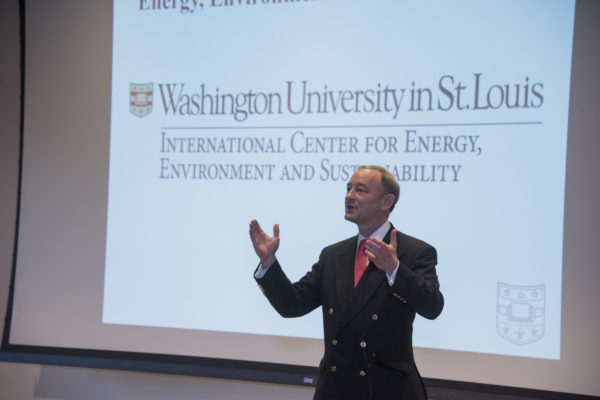Leadership change in store at International Center for Energy, Environment and Sustainability
Himadri Pakrasi, founding director of the International Center for Energy, Environment and Sustainability (InCEES) at the university, will conclude his tenure as director, effective July 1. David Fike, who has been associate director, will serve as interim InCEES director.
Walking the wire: Real-time imaging helps reveal active sites of photocatalysts
Nanoscale photocatalysts are small, man-made particles that harvest energy from sunlight to produce liquid fuels and other useful chemicals. A new imaging solution developed at Washington University in St. Louis reveals the significance of a particular structural feature — clusters of oxygen vacancies — in achieving high photocatalytic activity.
NSF funds research on nitrogen fixation
Himadri B. Pakrasi, professor of biology in Arts & Sciences and director of InCEES, was recently awarded a $1.2-million grant for a collaborative study of cyanobacteria with the ultimate purpose of producing nitrogen-fixing crop plants.
Students participate in U.N. global climate summit
Ten students are among representatives from nearly 200 countries gathered in Poland for COP24, the U.N. conference on climate change. This year’s meeting will focus on how to achieve climate goals set in the 2015 Paris Agreement.
‘Reflections on Climate Change’ to fuse policy, advocacy, industry
Policy, advocacy and industry leaders are coming together Sept. 29 at Washington University in St. Louis to discuss the past, present and future of climate change. Environmental leader Christiana Figueres is among the speakers.
Researchers engineer bacteria that create fertilizer out of thin air
A team at Washington University in St. Louis has created a bacteria that uses photosynthesis to create oxygen during the day, and at night, uses nitrogen to create chlorophyll for photosynthesis. This development could lead to plants that do the same, eliminating the use of some — or possibly all — man-made fertilizer, which has a high environmental cost.
Energy and environment initiative turns 10, keeps growing
This Earth Day, leaders at Washington University in St. Louis announced a new name and an increased emphasis on the university’s united sustainability effort: the International Center for Energy, Environment and Sustainability, or InCEES.






